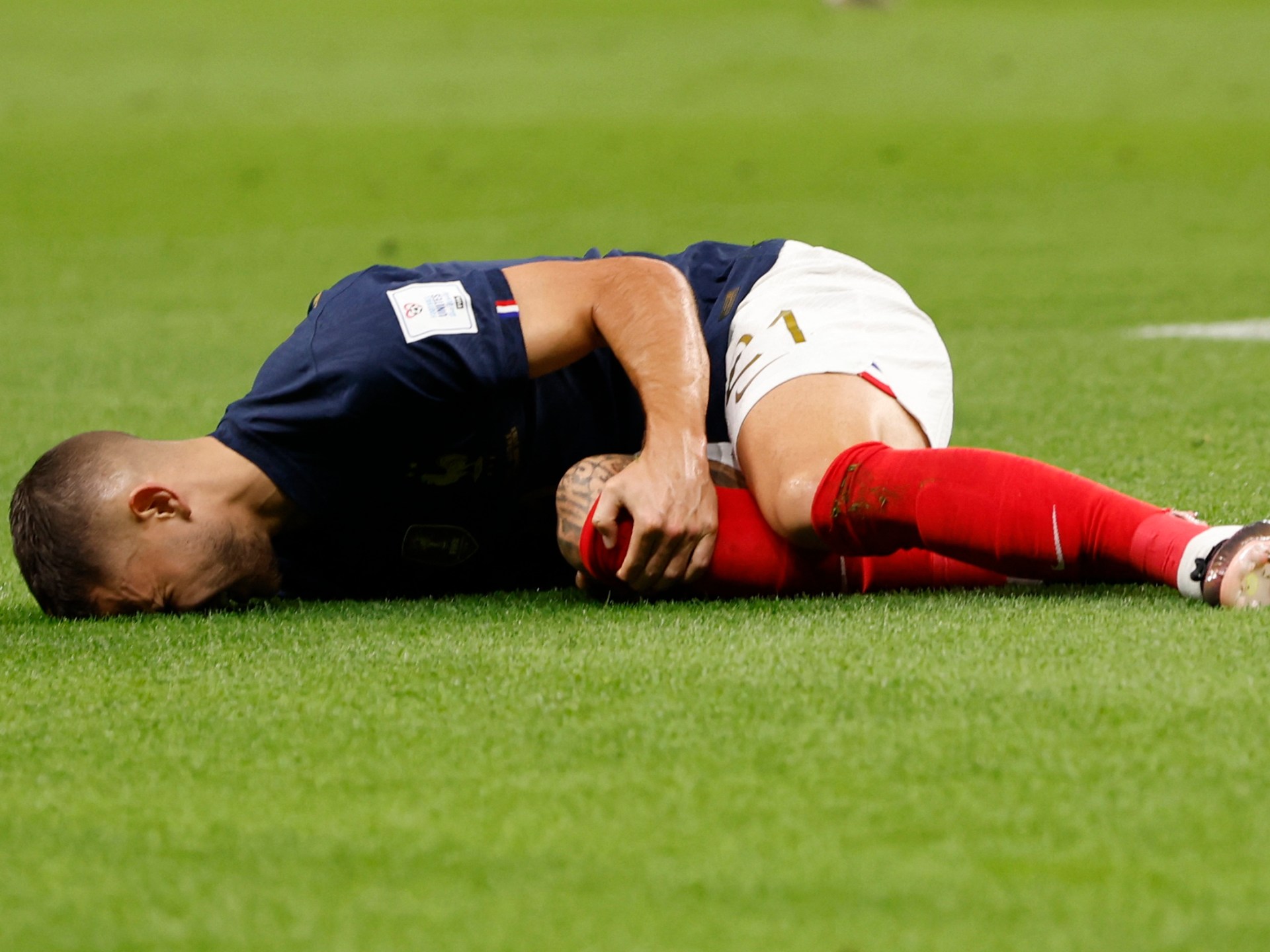Bayern Munich has officially announced that its player Lucas Hernandez will not be able to continue playing in the Qatar 2022 World Cup due to a cruciate ligament injury during his country's (France) match against Australia.
Cruciate ligament injury is one of the most common injuries in football, so what is the cruciate ligament?
Why would it rupture?
And how is it treated?
Cruciate ligament.. what is it?
The knee joint consists of the meeting of the thigh bone (the femur) with the shin bone (tibia) and the femur with the patella (patella), and the patella is the bone that covers the knee joint from the front to protect it.
These bones are connected by 4 ligaments: the anterior cruciate ligament, the posterior cruciate ligament, the internal collateral ligaments, and the external collateral ligaments.
These ligaments hold the three bones together and maintain the structure of the knee.
The collateral ligaments control lateral movement and protect the knee from abnormal movements.
As for the cruciate ligaments located inside the knee, they cross one another to form an “X” sign (X) inside the knee.
The cruciate ligament controls the forward and backward movement of the knee.
The anterior cruciate ligament runs diagonally in the middle of the knee to prevent the tibia from sliding in front of the femur.
While the posterior cruciate ligament prevents the leg from moving backwards significantly.
The posterior cruciate ligament is stronger and less prone to injury than the anterior cruciate ligament.
The cruciate ligament controls the forward and backward movement of the knee (Shutterstock)
Cruciate ligament injury.. causes and diagnosis
According to the OrthoInfo website, which is based on the American Academy of Orthopedic Surgeons, half of the anterior cruciate ligament injuries are associated with an injury to another part of the knee, such as the articular cartilage, meniscus, or other ligaments.
The cruciate ligament injury can be classified according to the severity of the torsion to which it was subjected to 3 degrees:
The least damaging is a first-degree sprain, in which the ligament is slightly stretched, but is still able to keep the knee together.
Whereas, a second-degree sprain is so large that the ligament loses its elasticity and is expressed as a partial tear of the ligament.
As for the third degree, it is usually expressed as a complete rupture of the ligament, which causes it to separate into two parts, and thus the knee becomes in an unstable position.
Most of the anterior cruciate ligament injuries are completely or almost completely ruptured, while partial rupture is rare.
Cruciate ligament injuries occur as a result of a sudden change in the direction of movement or stopping it, or because of slowing down while running, or as a result of a wrong landing after jumping, direct contact, or a collision while playing football, for example.
Studies show that women who exercise are more likely to suffer cruciate ligament injuries than men.
This is due to the difference in the physical and hormonal structure, the nature of the body, and the difference in muscle strength between them.
A cruciate ligament injury has a number of symptoms, including hearing a popping sound in the knee, pain, and swelling around the knee. The pain and swelling may disappear within the 24 hours following the injury, and the injury may worsen if the person returns to exercise.
Symptoms also include loss of full range of motion of the knee, pain when walking and discomfort while walking.
Younger athletes with a cruciate ligament tear need surgery to return to sports (Shutterstock)
How is a cruciate ligament injury treated?
The doctor takes the patient's medical history and conducts physical examinations for him, and during that he compares the healthy knee with the knee that may be injured, and through these examinations it is possible to detect an injury to the cruciate ligament.
The doctor may need an x-ray to check whether the injury is related to a broken bone, or an MRI to make sure there is no injury to other parts of the knee.
People with partial rupture of the cruciate ligament need at least 3 months to rehabilitate and recover from their injury, while some patients may suffer from persistent symptoms for a longer period.
On the other hand, patients who suffer from a complete rupture will have a weaker recovery unless they resort to an operation in which the torn ligament is replaced.
The treatment of the cruciate ligament rupture depends on the patient's needs, while younger athletes need to undergo an operation that enables them to return to sports, older people can return to a quieter life without resorting to that.
A number of studies indicate that it is possible to reduce cruciate ligament injury when appropriate warm-up exercises are practiced, at a time when some sports colleges provide instructions to athletes on the correct mechanism for practicing some exercises such as jumping and landing from jumping, which reduces these injuries.

